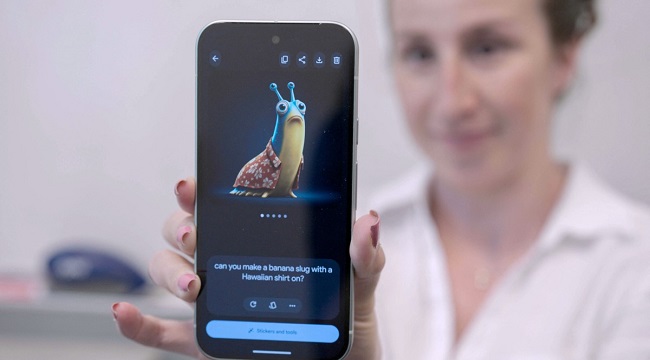
California Assemblywoman Gail Pellerin recently had an AI generate a playful image of her dog in front of the state capitol. Meanwhile, Igor Gaspar engaged the Google Pixel 9 in a conversation about the causes of inflation.
In Santa Cruz, many residents expressed both fascination and unease as they explored the Pixel 9’s AI capabilities. The phone could seamlessly add users into photos and responded intelligently to queries, drawing a mix of admiration and caution. When AFP visited the coastal California city, passersby were invited to test the phone’s features, highlighting the growing integration of AI into everyday devices. Both Google and Apple are leading this charge, claiming that AI is entering a transformative phase in how smartphones function.
One of those testing the Pixel 9, a man named Day, was impressed with its responsiveness. “I asked it a question, and it gave me a quick answer,” he remarked. “That’s better than the phone I have now.”
Assemblywoman Pellerin echoed these sentiments. “There are some incredible tools that people can use creatively and for information gathering,” she noted. However, she also voiced concerns about the potential misuse of AI, particularly regarding misinformation and deepfakes. Pellerin supports state legislation aimed at regulating AI to prevent harm in communities or industries. She admired the AI’s “Add Me” feature, which lets users insert themselves into group photos, stating that she could see herself using AI more in the future. But with this growing reliance on AI, she added, “It’s scary. If we had to live without them, it would create a lot of desperation.”
Bells and Whistles?
Leilani Gilpin, a professor of computer science at the University of California, Santa Cruz, raised questions about the need to integrate AI so heavily into smartphones. She was concerned that AI’s confident-sounding responses could sometimes mask inaccuracies, a phenomenon known as “hallucination” in language models.
“Different language models hallucinate different information,” Gilpin explained, pointing out that users of these AI-powered phones might encounter made-up details. She acknowledged the appeal of conversational AI, especially while out walking, but felt that current applications were more like “bells and whistles” rather than revolutionary breakthroughs. Gilpin also noted that the AI on the Pixel 9 could be overly verbose, providing deep explanations when simpler answers would suffice.
On the other hand, Gaspar and his friends were intrigued by the AI’s “Add Me” feature, with one friend even suggesting they swap phones because of it. “It’s a really impressive feature,” Gaspar said. However, he also shared concerns about the futuristic nature of AI, particularly in an era of information wars. The ability to digitally add someone to a photo, so convincingly, raised concerns about authenticity.
Gaspar expressed skepticism about AI becoming more prevalent in smartphones, particularly in Apple devices. He worried that if AI is integrated without consumer control, it might push him away from his beloved Apple products. “I wouldn’t feel comfortable with something so advanced that we aren’t even sure how it works on our phones,” he said.
Controlling AI in Smartphones
To prevent backlash, companies like Google appear to be taking steps to limit the controversial uses of AI. For example, Google’s Gemini AI on the Pixel 9 avoids discussing political topics, and the image generation tool refuses to depict real people.
For more updates on this and other stories, join our WhatsApp channel: https://whatsapp.com/channel/0029VabITrvEAKW7DSkTfP0JAweAndTrepidationAI.